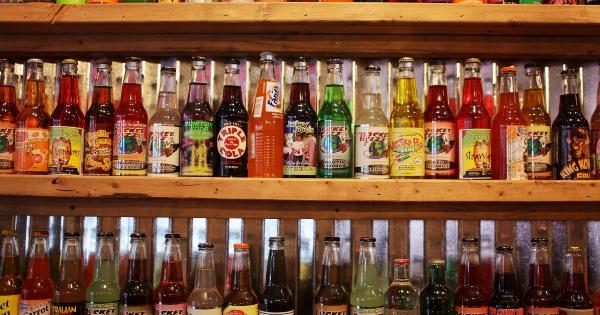Soft drinks and carbonation have become synonymous with each other, creating a perfect match that tantalizes our taste buds and brings refreshment to our lives.
The effervescence and fizziness of carbonated beverages add an exciting element to the drink, making it a popular choice among people of all age groups. In this article, we will explore the fascinating world of soft drinks and the role carbonation plays in enhancing their appeal.
The Science Behind Carbonation
Carbonation refers to the process of dissolving carbon dioxide gas under pressure into a liquid, resulting in the formation of bubbles and the characteristic fizz associated with carbonated drinks.
This process can occur naturally, as in the case of sparkling mineral water, or through artificial means, such as in sodas and soft drinks.
Evolution of Soft Drinks
Soft drinks have come a long way since their inception. Historically, carbonation was not initially a part of soft drinks.
In the early days, soft drinks were primarily non-carbonated, and their popularity was driven by the addition of flavors, sugar, and other ingredients to create a refreshing beverage. However, the invention of carbonation techniques revolutionized the soft drink industry, leading to the creation of a wide range of carbonated beverages that we enjoy today.
Enhancing Taste and Refreshment
One of the primary reasons carbonation has become such an integral part of soft drinks is its ability to enhance taste and refreshment.
When carbon dioxide is dissolved in a liquid, it forms carbonic acid, which provides a slightly tangy and refreshing flavor. This acidity balances the sweetness in many soft drinks, preventing them from becoming overly cloying.
Texture and Mouthfeel
Carbonation also contributes to the texture and mouthfeel of soft drinks. The bubbles created by carbon dioxide add a lively and effervescent quality to the beverage, resulting in a satisfying mouthfeel.
The sensation of the bubbles bursting on our tongues creates a unique and enjoyable experience, making carbonated beverages a delight to consume.
Social and Cultural Significance
Soft drinks, particularly carbonated ones, have become ingrained in our social and cultural fabric. They are often associated with celebrations, parties, and gatherings, where they are enjoyed in abundance.
From birthday parties to sporting events, soft drinks serve as a symbol of togetherness and celebration. The sound of a can opening and the hiss of carbonation escaping has become a familiar and comforting sound for many.
Variety and Innovation
Carbonation has opened up a world of possibilities for soft drink manufacturers to experiment with flavors and create innovative drink options.
From classic cola to fruity sodas and sparkling energy drinks, carbonation has become a medium for showcasing a wide range of tastes and combinations. The effervescence adds an extra dimension to the flavor profile, elevating the drinking experience.
The Role of Carbonation in Marketing
Soft drink companies understand the allure of carbonation and often use it as a focal point in their marketing strategies.
Television commercials showcasing the refreshing bubbles of a carbonated drink or the satisfaction of opening a can have become iconic and instantly recognizable. The association of carbonation with joy, fun, and indulgence has helped soft drink brands establish strong emotional connections with consumers.
The Health Concerns
While soft drinks and carbonation undeniably have their appeal, it is important to address the health concerns associated with excessive consumption.
Carbonated beverages, particularly those high in sugar, can contribute to weight gain, tooth decay, and other health issues when consumed in large quantities. Moderation and understanding personal dietary needs are crucial to enjoying soft drinks responsibly.
Alternatives and Trends
In recent years, the demand for healthier beverage options has led to the rise of alternatives to traditional carbonated soft drinks.
Sparkling water, flavored with natural essences and without added sugars, has gained popularity as a healthier choice for those seeking carbonation without the negative health effects associated with sugary drinks. Additionally, low-calorie and zero-sugar soft drinks have emerged as alternatives catering to health-conscious consumers.
The Future of Soft Drinks and Carbonation
Soft drinks and carbonation are likely to remain intertwined for the foreseeable future. The ever-evolving tastes and preferences of consumers will continue to drive innovation, leading to the creation of new and exciting carbonated beverages.
As health-consciousness grows, we can expect further advancements in the development of healthier alternatives that offer the same refreshing fizz without compromising on taste.
Conclusion
Soft drinks and carbonation have unquestionably formed a match made in heaven. The effervescence and unique sensation of carbonation enhance the taste, texture, and overall drinking experience, making soft drinks a favorite for many.
While it is essential to be mindful of the health concerns associated with excessive consumption, the enjoyment and social significance offered by soft drinks and carbonation cannot be denied. So, whether you prefer a classic cola, a sparkling lemonade, or a flavored soda, raise your glass or can, and savor the magical combination that is soft drinks and carbonation!.




























